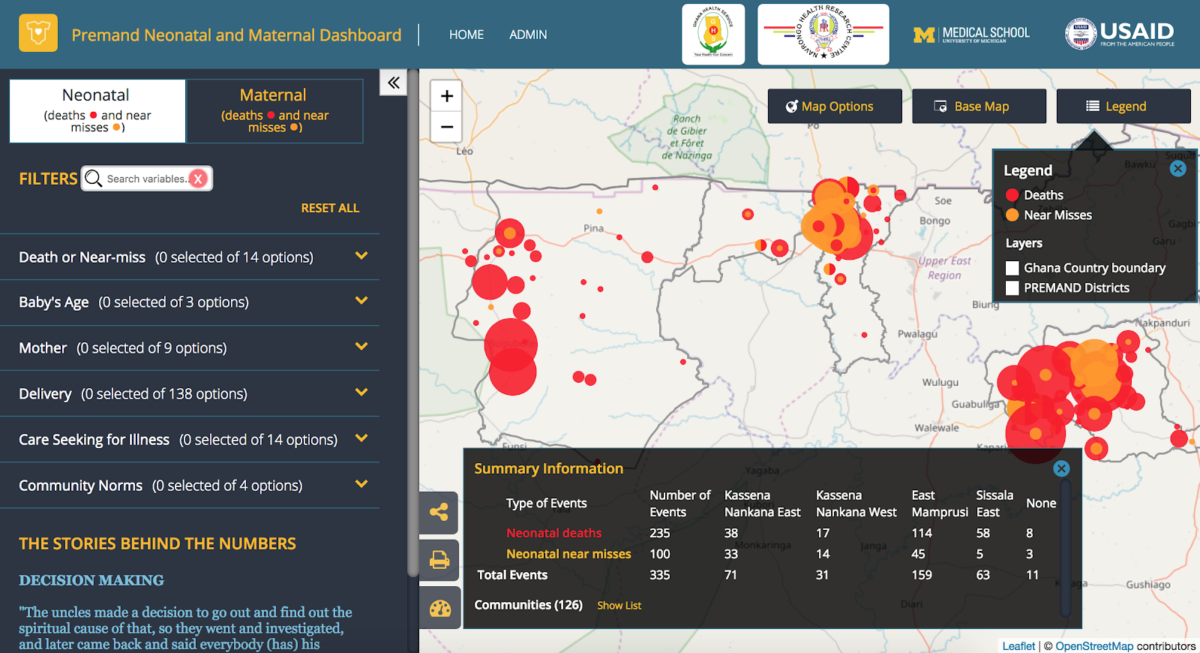The PREMAND Project: Preventing Maternal and Neonatal Deaths in Northern Ghana
The PREMAND project funded by USAID and implemented in partnership with the University of Michigan Medical School, the Navrongo Health Research Center, USAID-Ghana, and Ghana Health Services worked to understand the social and cultural factors that may contribute to the deaths and near-death recoveries of mothers and babies in four districts (Sissala East, Kassana Nankana West, East Mamprusi, Kassena Nankana East) in Northern Ghana.
The Problem
Pregnancy and childbirth pose a significant risk to mothers and babies in low- and middle-income countries (LMICs). Nearly 300,000 women die each year from pregnancy-related causes. 3 million babies die within a month of being born. While Ghana has better health indicators than many of its West African neighbors, it faces significant challenges in improving maternal and newborn health.
PREMAND is focused on three simple concepts:
1) Until we can see where mothers and infants are dying and falling ill, we can’t effectively focus prevention efforts.
2) Prevention efforts need to address social and cultural factors that may affect whether an illness is recognized early, whether care is sought, and what type of care is sought.
3) Communities know best: if given the knowledge and tools, communities have the potential to devise their own, innovative solutions to maternal and neonatal health challenges.
Qualitative Data for Quantitative Results
From the data collected via in-person ‘social autopsy’ interviews, Development Gateway developed a mapping tool designed to highlight the interactions of social, cultural, and geographic factors in contributing to maternal and neonatal health outcomes. The map allows the user to see project districts that illustrate areas with high concentrations of adverse outcomes and the patterns associated with these events. The flexible PREMAND tool has been adapted to serve a range of users: from district health policymakers to local community leaders. It serves to effectively translate highly technical research data into an easily-understandable map, to make this information approachable and usable by decision-makers at all levels.
Focus on Data Privacy
What’s the best way to visualize this sensitive data? The platform also prioritizes data privacy and security of individuals, and uses an algorithm that “fuzzes” location of events, to protect the privacy of mothers and babies. Data was collected with an anonymized number that was never personally identifiable.
Why the PREMAND Project and Mapping Portal?
PREMAND aims to change the way we think about maternal and neonatal health – to help communities, care providers, policy makers, and the donor community to push beyond understanding mere clinical causes of death, to really understanding factors that lead to delays in care seeking, and limit the ability for mothers and babies to receive the care they need.
